#fairy propaganda
Text
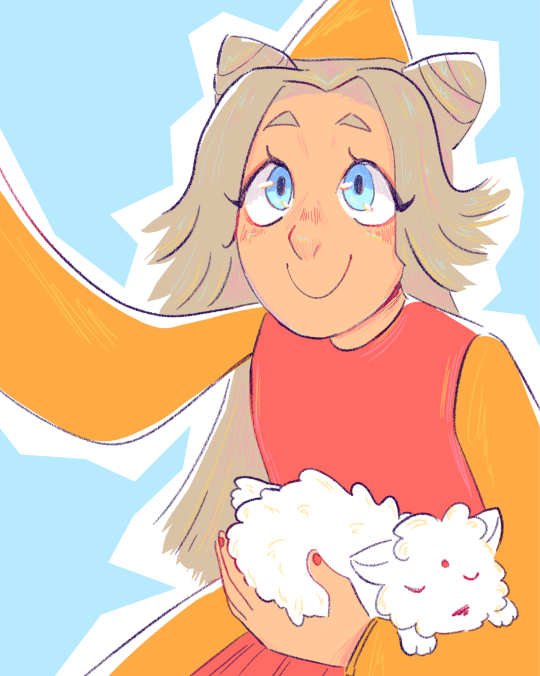
@poorly-drawn-mdzs 's fairy fanart!!!!!!! bc she deserves it!!!!!!!!! beloved!!!!!!!!!!! ft jin ling the dog
#mdzs#my art#equineswap au#she's disgustingly candy coloured#bc i left colour theory at the door when i started on my drawing journey years ago and haven't retrieved it since#I'm starting to worry if it's ok to keep tagging this as mdzs bc like it is mdzs but it isn’t#also please let's pretend selfies are a thing i completely forgot this wasn't modern au until i was basically done with the drawing#once upon a time i got to hold a dog like this and it was the greatest moment of my life ever#that's the context for this piece#anyway i love fairy!!!!! with my whole heart!!!!!!!#fairy propaganda#there will be more.
311 notes
·
View notes
Text


#fairy tail#laxus dreyar#acnologia#a fitting poll for fat tit friday i should say#feel free to get silly with it and spread propaganda if u wanna lmak#imma let this run for a week#starts on fat tit friday. ends on fat tit friday
84 notes
·
View notes
Text
In light of [gestures broadly to Reality] Thanksgiving is cancelled. No more thankfulness until we've dealt with The Horrors
#fuck thanksgiving#free palestine#ceasefire#the horrors#and also because thanksgiving is a propaganda fairy tale we tell#to obfuscate one of the worst genocides in history
157 notes
·
View notes
Text
Reverse 1999 HCs: The Kitchen
I mentioned these in passing, but I finally added them in post with more detail. Feel free to add your HCs to the buffet! Word count is 960ish so you know what you're getting into if you continue down this path of madness.

Apple tends to stay out of the kitchen unless he's looking for wine. He doesn't want to be mistaken for a tasty snack.
Regulus is banned from the kitchen but barges in anyway as the "official taste tester". She also steals from people's plates if they're left unguarded, unless it's Sotheby's. She is an exception. Vertin gets the worst of it where Regulus might lean over her shoulder and chomp down on her spoonful of food. This is the tax for sharing her premium snacks with Vertin.
As for the snack sharing, one time Regulus caught Vertin eating uncooked noodles with the seasoning packet sprinkled on top like chips as a snack. Ever since then, she gave Vertin free access to the stash of snacks in her room. There's always potato chips and Dr. Papper available to her friend.
Vertin stills occasionally eats noodles like chips because Madam Z used to do it when they were traveling together. When Smoltin caught her red-handed, Madam Z advised her not to be like her and to eat her celery sticks instead. They both knew that wasn't going to happen.
Sotheby is allowed use the kitchen with supervision. There needs to be someone there to give their opinion on her creative choices (stop her from accidentally poisoning someone).
Druvis is the head chef and Sonetto is her apprentice that does everything by the book due to her upbringing in the Foundation. For example, if they don't have the right ingredients, Sonetto believes they can't make the dish anymore. However, Druvis will teach her how to substitute things and improvise.
Sonetto is a great cook, but she operates like a robot that needs to be updated with new ideas from a programmer. All the knowledge is there, but she struggle to make her own conclusions. (This is something we see her struggle with in game but I applied it to cooking lol)
The Horror Trio have no interest in cooking, only eating. Although, Jessica and her Critter friends harvest things from the garden so Druvis can supervise/mentor in the kitchen.
Vertin can't cook per say, but she can throw together very basic meals a child could do (eggs, bacon, toast, grilled cheese, simple stuff). However, her specialty is eggs. She can cook an egg in every way possible thanks to Madam Z. The scientist told her if she learns to cook anything, let it be an egg. They're easy to cook, versatile, and a good source of protein. This is an HC but I can hear her explaining egg supremacy to Vertin. Fun fact: Eggs are a staple food in China and many Asian countries. Eat an egg for Madam Z everyone.
Vertin's also handy with a knife since it's all about technique and she's good with her hands. Before her crew, she probably ate a lot of sandwiches, Foundation MREs, and instant food (with eggs on the side).
However, one day Druvis witnessed hot bacon grease pitch onto Vertin's arm. Vertin flinched at first but continued flipping her bacon, saying, "It happens sometimes." Druvis damn near threw Vertin in the sink in her rush to run cold water over it. They didn't notice how serious Vertin's disregard for injuries were due to the lack of scars and reactions from her. Vertin doesn’t understand since it'll go away with a healing potion. This breaks Druvis's heart because even if it's healed, Vertin's putting herself through unnecessary pain since she's used to getting hurt.
That was the last time Vertin was allowed to touch a frying pan (rip her beloved eggs as collateral), but they still let her use the knife since she's adept with it. Also Vertin wants to help them because it's a way for her to spend more time with them. They couldn't chase her away after she admitted that.
There is another advantage to letting the Timekeeper help sometimes; Vertin's the only one who doesn't cry rivers when she cuts an onion. Sonetto and Sotheby are a mess when they try. Pupnetto has a sensitive nose and Sotheby is baby. Druvis keeps her deadpan face but tears will prick at her eyes.
Vertin didn't always eat her veggies as a kid and Madam Z wasn't sure how to make her eat them. It's actually Tooth Fairy who found a way to make fruits and veggies fun. Vertin now does the same for her Suitcase Family.
Imagine an elegant, celebratory dinner set up by Druvis, Sonetto, and Sotheby after a particularly tough mission. What did Vertin contribute with her knife? Sandwiches? Salads? Nope. It's this:

Fruits and veggies decorated as little critters! It's how Tooth Fairy advised Madam Z to prepare them so Smoltin would eat them. As a kid she loved it. Vertin is creative so there are many variations (she's the opposite of Sonetto who's highly skilled but lacks creativity).
They're a hit with her crew too. Even Blonney, who normally acts like a moody teenager when it comes to her true feelings, finds them adorable. After seeing the way Jessica's eyes lit up from the little display, she was inspired to try and learn too. In secret, of course.
Horropedia said they were neat, but listed a terrifying bunch of ideas for Vertin's next fruit/veggie display: monsters, eyeball, tentacles, severed fingers, a dipping sauce that looks like slime or blood...
Bonus:
Regulus: Vertin! What are you doing?
Vertin: I'm making cheese toasties (grilled cheese). Don't worry, there's no way I can burn myself.
Regulus: You're dealing with hot melted cheese. On a scale of 1 to 10, how angry do you think Sonetto and Druvis would be if I called them right now?
Vertin: ...Would you like one too?
Regulus: Cut diagonally, no crust. Thanks ❤️
#reverse 1999#reverse 1999 hc#suitcase fam#this is me being self indulgent#also the idea of madam z having small traces of gremlin energy#that only tooth fairy and smoltin know about#is important to my mental health#the gif hits different after writing this#i should just write the damn fics lol#this post contains egg propaganda
129 notes
·
View notes
Text
swifties seem to talk a lot about how any criticism of pop star taylor swift must be misogyny then turn around and do the weirdest misogyny themselves. for example taylor swift lyrics in her adult life will be like i DO NOT Want. to get married. bitches keep saying taylor swift get married and i say im fucking busy and shit. then her own fans will be like oh she's soooo going to marry her newest boy toy of 2 months. and i say well not to come to the aid of a millionaire but do leave her alone and do get a job. then taylor swift will write a song about her experience of being a kid with an adult boyfriend and people will be like great breakup song only the people who have experienced the greatest pain that exists in this world and is the most womanly pain which is a normal breakup with a normal man who treated you normal will get this one. like again not to defend internationally known pop star and millionaire and co2 machine taylor alison swift but man. she is like a person with a life outside of being in love or out of love. as are all women. as well as a person who makes music using creativity and making shit up and not just her diaries. as are all artists
#like seriously something so rotten in the brains of everyone who just wants her to do heterosexual fairy tale propaganda#and will read that into anything she does like. sometimes it's not about that sometimes it's about the national going pop#i mean at the end of the day it's a classic using the language of socially aware people to defend status quo ideas. but come on#taylor swift#thing
58 notes
·
View notes
Text
wip whenever
tagged by ten thousand people over the course of the past few weeks where i haven’t had anything to share so now i’m going to subject you all to wyll/shadowheart from a prompt fill i’ve been picking at instead of writing my exchange fic like i’m supposed to…
.
Once upon a time, a princess. Perhaps. She is as quiet as one, as secretive. Hidden away in some internal world, or maybe trapped. Wyll can’t tell exactly how much of her quiet mystery is due to her devotion to her goddess or something else. Whenever he tries to ask, he gets a simple little smile and no explanations. No reasoning as to why she’s whispering to herself, sitting on her heels at camp, far enough from the light of the campfire that the edges of its orange glow barely touch her. No hint on the strange and all consuming injury on her hand that distracts her. No closer to understanding the thoughts that go through her head, strange and beyond his imagination, but he wants to try.
He begins with small gestures, the ones he’s read about in books, the ones they used to read to him back in the city when he was still a duke’s son. He hands her a cup of vinegary wine they found in some ruin or another, a flower plucked from the roadside, a shiny flat rock perfect for skipping across a still lake. She always accepts gingerly, as if expecting a trick along with the treat.
“I just like seeing a little smile on your face,” he tells her earnestly.
She starts to believe him, he can tell by how her smile begins to widen, but then she clutches her injured hand close to her chest and turns away. A princess in peril, locked away in the tower of her mind, and the dragon that traps her within. He feels something in his chest expand at the sight of her pain. Lucky for them, he’s a hero. Saving maidens in distress is what he does best.
#idk who out there (outside of the galeheart server lol) has ever even thought about wyll/shadowheart#but i for one am rolling around in the mud of Prince Charming and princess in peril#maybe a play on fairy tale idk#it looks ok so far idk where this will go#also someone fuckin slap me i NEED to finish this exchange fic#and my useless boomer mother in law is stayin the weekend with us so who knows when i’ll find the energy to write while ignoring her#republican propaganda and veiled antivax musings#less than a year and we move so fuckin far we’ll never clap eyes on a republican again god i hope i last that long#anyway LOL#wyll ravengard#shadowheart#wip whenever#my writing
22 notes
·
View notes
Text
RANI - Disney Fairies

PROPAGANDA:
Water Fairy, she sacrifices her wings but becomes a pretty good swimmer because of it
70 notes
·
View notes
Text
one of the reasons I mourn the loss of Xunyin (Xunfeng x Danyin) to the cutting room floor is because we don't actually have an active fairy of Shuiyuntian x Moon Tribe member pairing in the drama.
We have Jieli x Shangque which is technically half-fairy half-moon tribe x dragon, but Jieli clearly doesn't identify with her fairy side for a good chunk of the drama due to the shenanigans behind her family, ergo the conflicts of the relationship lie elsewhere.
We have Danyin and Jieli's mom and dad, who are actually Moon Tribe x fairy, but their relationship is past and one of them is dead, so our engagement with the symbolism and struggles of their relationship of a mixed couple from two opposing sides is limited.
DFQC x Xiao Lanhua is the closest we have, in that Xiao Lanhua basically functions as a fairy which in turn causes the expected trials for her and DFQC's relationship considering the tension between the Moon Tribe and Shuiyuntian. But there's a problem.
Xiao Lanhua wasn't actually a fairy.
The conflicts involving the contention of Xiao Lanhua's identification as a fairy carry this pervasive sense of nullification hanging over them because she isn't one of Shuiyuntian, she's from Xishan. There's always a sense that the drama can flip that card and essentially dissipate the conflict on the spot over her being a fairy wanting to marry someone from the Moon Tribe.
With that being said, why does it matter and why do I care? Because LBFAD presented itself as a star-crossed lovers story in the context of the lovers being from opposing hostile sides, in this case Shuiyuntian and the Moon Tribe. Their conflict is a major part of critical worldbuilding and drives the major plots, so naturally you'd assume a fairy and a Moon Tribe member would be at least a major pairing. Especially since you'd expect it to be the good-ending parallel to the story of Yannv and Chonghua.
It's by no means a big hole in the story, but it is there and I can't help but ponder it considering everything else.
38 notes
·
View notes
Text
I found that picrew and used it to make my version of Team Shadowgear as kids.



And for fun, bonus Gajeel and Juvia.


#fairy tail#team shadowgear#levy mcgarden#jet#droy#gajeel redfox#juvia lockser#ft levy#ft jet#ft droy#ft gajeel#ft juvia#not me adding in my transmasc demiboy Gajeel propaganda too#just imagine Gajeel has more scales on his face and Droy and Juvia are chubby#Fira's headcanons#fairy tail headcanons
12 notes
·
View notes
Text

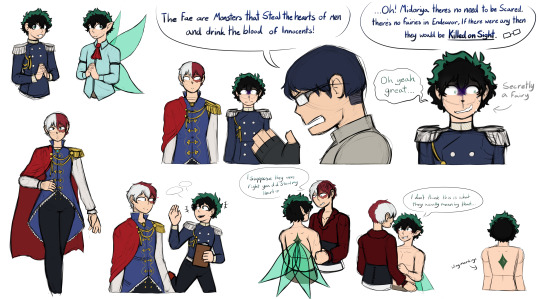
ive been reading a ton of fantasy tddk fics so i uh made another au
ive been trying to avoid making more fantasy au's because i know i can and will make like 20 fantasy au's and i feel like that would get confusing haha... but uh yeah i already caved with a diffrent fantasy au already sooooo
mostly a vauge plot still but, basic fantasy world set up. fairies/the fae in this are just like a race but their current king (afo) is like super evil and his tyranical rule makes everyone else thing that their whole race is a bunch of people eating monsters,
deku is a fairy in disguise who ran from home ages ago and swore loyalty to the crown after he met todoroki at a town festival, he's horribly scared cause any time fairies are found in endeavor their killed and he's here hanging out in the same building as the king, flirting with death much?
prince todoroki meanwhile keeps having this weird reocurring nightmare where his best friend, and royal advisor, midoriya turns into a fairy and dies trying to protect him and its upsetting, not because his friend might be a fairy, but because he really doesn't want him to die, and he can never get a clear look at what kills midoriya so he's not sure what he needs to be looking out for, or how long he has left, also he's slowly realising that his feelings for midoriya may infact be more than platonic which isnt helping.
#bnha au#tododeku#todoroki x midoriya#todoroki x izuku#fantasy au#royalty au#midoriya izuku#todoroki shouto#iida tenya#i dont have a name for this au yet so its just kinda fairy au i guess?#also iida isnt a bad guy he's just a victim of in world propaganda
142 notes
·
View notes
Text









back before we knew micko westmoreland was 5'6”, @silverfactory and i had a headcanon that jack fairy was quite tall. this can be seen in many of these mostly-domestic post-glam drawings i drew in 2020 of jack and malcolm (living in berlin together), most notably the one in which they are dancing (more like mal sleeping upright) on one of those… you know how like in rooms in the seventies there would be a point where the floor was raised by a step or two (and carpeted)?
anyway, i still quite like a lot of these. the last two in particular were a specific request from @silverfactory to see more seasonal drawings of them as a kind of cheer-up. the cat in the second is jack’s cat (and most constant companion), maila, according to her headcanon.
@25yearsofvelvetgoldmine
#more malcolm cat person propaganda#also the third lying down one. malcolm voice world cold and hard tiddt soft and warm#velvet goldmine#jack fairy#malcolm velvet goldmine#micko westmoreland#todd haynes#brian molko#starboy art#artists on tumblr#25YearsOfVelvetGoldmine#VelvetGoldmine25th
20 notes
·
View notes
Text
Edmund Dulac's Fairy Tales go to War
Jstor Daily published an article with the catchy title "Edmund Dulac's Fairy Tales go to War". Of course I had to read it. The original article is here if you want to check it out, but I'll still copy-paste it below because it's crazy info. (And given it is quite long I will put two thirds of it under a cut)
Edmund Dulac’s Fairy Tales Go to War
One of the best-known illustrators of the “golden age of children’s gift books,” Dulac was also a subtle purveyor of Allied propaganda during the Great War.
By: S. N. Johnson-Roehr and Jonathan Aprea ; December 16, 2022
Once upon a time, there was a young artist named Edmund Dulac, who built his early reputation on his illustrations for J. M. Dent & Company’s 1905 edition of Jane Eyre. Almost instantly, he became a leading name in the book arts, producing illustrations for the Brontë sisters and popular magazines. Annual exhibitions of his drawings and paintings at the Leicester Galleries, London, drew the attention of both the European and American art world. In 1910, critic Evelyn Marie Stuart, writing for Chicago’s The Fine Arts Journal, described his work as “rich with poetry and imagination, and strong in the possession of that decorative element which renders a picture universally pleasing.” His drawings were like "things seen in a vision or a mirage; or traced by the fancy of a child in the lichens on the wall, the water discolorations upon a ceiling, or the light shining through a broken crumpled shade; or, even like the things we try to decipher in the leaping flames and glowing embers of an open fire—many of these delightful sketches suggest to our fancy in some detail a variety of objects."
Dulac’s themes tended toward the fantastical—scenes from the Arabian Nights and Omar Khayyam’s Rubáiyát—with roots in the Pre-Raphaelites and not far removed from the work of Arthur Rackham and Kay Nielsen.
Born in France and naturalized as a British citizen in 1912, Dulac understandably awarded his loyalties to the Allies during the Great War. To support the war effort, he contributed his art and design skills to several charity books, including Princess Mary’s Gift Book and King Albert’s Gift Book, both published in 1914. If there remained any doubts as to his feelings about the Axis powers, they were surely erased when he published Edmund Dulac’s Picture-Book for the French Red Cross in 1915, with its cover proclaiming “All profits on sale given to the Croix Rouge Française, Comité de Londres.”

Even more convincing—and more inventive—was his use of fairy tales to not just further his charitable efforts but to possibly encourage the United States to join the war. Published in 1916, Edmund Dulac’s Fairy-Book was a subtle but persuasive example of wartime propaganda. Subtitled “Fairy Tales of the Allied Nations,” it included Dulac’s own adaptations of folk tales gathered from the nations fighting with Great Britain: France, Russia, Italy, Belgium, Serbia, Japan, and China.
Below, courtesy of the Minneapolis College of Art and Design, are reproductions of some of the illustrations from Edmund Dulac’s Fairy-Book, accompanied by brief explanation of each story.

Snegorotchka: A Russian Fairy Tale
Snegorotchka (more commonly transliterated Snegurochka), the “The Snow Maiden,” is a recurring character in Russian folklore, playing various roles, from child to adult, in stories bounded by the winter and spring seasons. By the late nineteenth century, Snegurochka had blended fully with the traditions of Christmas, often serving as a helper to Grandfather Frost (Ded Moroz).
In Dulac’s version of a common tale, Snegurochka is a girl made from snow, brought to life to add joy to the waning years of a childless couple. An elderly man and women all but will the girl into being as they shape a tiny body of snow in the woods. Snegurochka leaps to life, filling their home and souls with warmth throughout the winter. Tragically, the little girl disappears with the heat of spring weather, leaving the parents bereft.
Another version of the Snegurochka tale formed the basis of a play by Alexander Ostrovsky, which was subsequently adapted into an opera by Rimsky-Korsakov.

The Buried Moon: An English Fairy Tale
Sometimes known as The Dead Moon, The Buried Moon highlights the dangers of living in the bog country of Northern Europe.
Traveling through a bog, a personified Moon becomes entangled in magical, malevolent branches. After some struggle with “all the vile things” that love darkness (witch-things, bogle-bodies, creeping things, and the Scorpion King, to name a few), the Moon finds herself buried deep in the mud, held down with a black stone.
Of course the humans miss the Moon, lamenting her failure to appear in the sky on schedule, but who even knows where to search for her? Even the Wise Woman of the Mill can’t see any trace of her. Fortunately, just before her entombment, the Moon had managed to briefly shine her light to guide a lost and wandering human out of the treacherous marsh. Remembering this moment, the man spreads the word. Emboldened by the Wise Woman’s words of encouragement as well as the Lord’s Prayer, the local people march to the bog, fight off the Horrors of the Darkness, and rescue their beloved Moon

White Caroline and Black Caroline: A Flemish Fairy Tale
Folklorist Antoon Jozef Witteryck collected White Caroline and Black Caroline (Wit Karlientje en Zwart Karlientje) and included it in his 1899 Old Flemish Folktales (Oude Westvlaamsche volksvertelsels), an annotated version of which was republished by Hervé Stalpaert in 1946. The story can also be found in the Annales de la Société d’Emulation pour l’Étude de l’Histoire & des Antiquities de la Flandre (Bruges, 1889).
White Caroline and Black Caroline depends on the familiar figure of the evil stepmother, a woman who loves her ugly daughter (Black Caroline) more than her beautiful stepdaughter (White Caroline). Everyone and everything, from townspeople to lambs to dancing dogs, love White Caroline and equate her beauty with good. But the mother prefers her own daughter, noting “Black Caroline was so ugly;—but she was good all the same!”
And indeed, Black Caroline is good. Her mother tries no fewer than three times to murder White Caroline, and each time, Black Caroline intercedes. Poison thorns in the pillow, poison in her meatball dinner, an “accidentally” falling millstone—none manage to kill White Caroline, thanks to Black Caroline’s quick thinking.
The abrupt entrance of White Woman, queen of all the water and the woods, brings the murder attempts to a close. Not surprisingly, White Woman also loves White Caroline and promises to give her whatever she wishes—beautiful grapes, a dress of silk, a nice sailboat. Luckily, White Caroline is also good: she wishes to have Black Caroline with her. More than that, she wishes they could look alike. The White Woman has an idea:
“Little white feathers appeared on their shoulders and spread until they were entirely covered; and there they stood together, two beautiful white swans! And ever after they swam up and down on the peaceful water and no one could tell one from the other.”
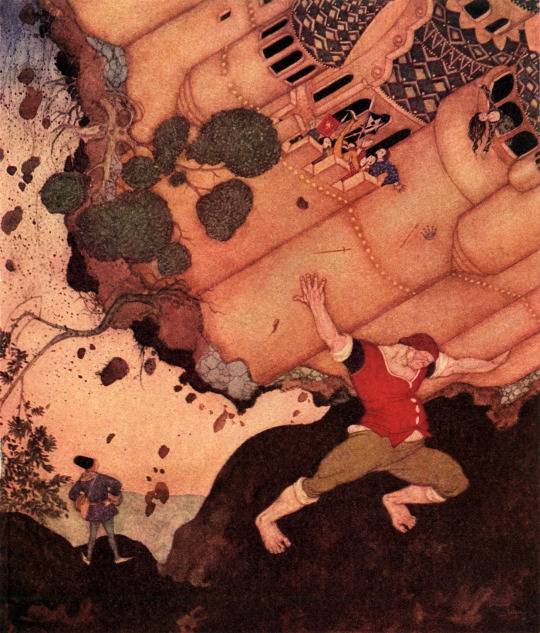
The Seven Conquerors of the Queen of the Mississippi: A Belgian Fairy Tale
While there may be an actual fairy tale underpinning The Seven Conquerors of the Queen of the Mississippi, the story’s title reveals Dulac’s probable agenda. It takes no large leap of the imagination to read the “seven conquerors” as Great Britain, France, Russia, Italy, Serbia, Japan, and China, all seeking an alliance with the Queen of the Mississippi—the United States—on the fields of Belgium.
The story is straightforward and structurally repetitive—each conqueror swears an oath of loyalty, and their individual strengths combine to win the Queen and kill the King (hello, Kaiser Wilhelm II).
Dulac, or some unnamed collaborator, has penned a verse that cuts through the first half of the tale with a modern rhythm and vocabulary.
“Will you travel with me, my pippy?”
“Oh! Whither away? To Botany Bay?”
“But no; to the far Mississippi,
Where a Queen—tooral-ooral-i-ay—
Is waiting for what I’m to say.”
“I am yours! And the bounty?”
“Either here or in Botany Bay!”
‘Will you travel with me, my pippy?”
“Oh! Whither away? To Rome or Pompeii?”
“But no; to the far Mississippi:
There’s a Queen of great beauty that way,
And there’s no one but Cupid to pay.”
“I am yours! And the bounty?”
“Name your price: it shall be as you say.”
And so on. Travel with me, my pippy!

The Serpent Prince: An Italian Fairy Tale
The Italian poet Giambattista Basile collected The Serpent Prince (sometimes translated as The Enchanted Snake) in the seventeenth century, including it in The Pentamerone: Lo cunto de li cunti (The Tale of Tales). Folklorist Andrew Lang drew upon Basile’s version for The Green Fairy Book (1892).
Dulac has created his own prefatory material for the familiar story, opening with the popular nursery rhyme:
The old woman who lived in a shoe,
Who had so many children she didn’t know what to do,
allegedly “lived about the same time in another part of the country” even though The Serpent Prince was collected in Naples.
As the story goes, a forester’s wife, Sapatella, finds a tiny serpent in her firewood. Childless, Sapatella is startled but amenable when the serpent offers himself up for adoption (“she was a kind-hearted woman and very, very lonely”).
The serpent grows—as children do—and soon demands a wife. And not just any wife! The serpent must marry the king’s daughter. Surprisingly, the king agrees to meet this demand. Or does he? He will give his daughter in marriage only if the adopted son-serpent can turn all the fruit in the royal orchards to gold.
It’s not clear why anyone is surprised that a talking serpent can wield the magic necessary to turn fruit into gold. Nor is it clear why the king would think the serpent would fail at any additional challenge placed before him. Turn the walls into diamonds and rubies? No problem. Turn the entire palace into gold? Absolutely (“not gold plate either: it was all solid gold of the purest kind.”). The king is forced to cede the battlefield. The princess will marry the serpent.
Of course, the serpent is really an enchanted prince, and here you would think the story would end: the affianced are wed, their kingdoms allied. But thanks to an additional foolish act by the king, the prince is again enchanted (and worse), and only the princess can save him. But will she be able to outwit the wily fox standing between her and her beloved?
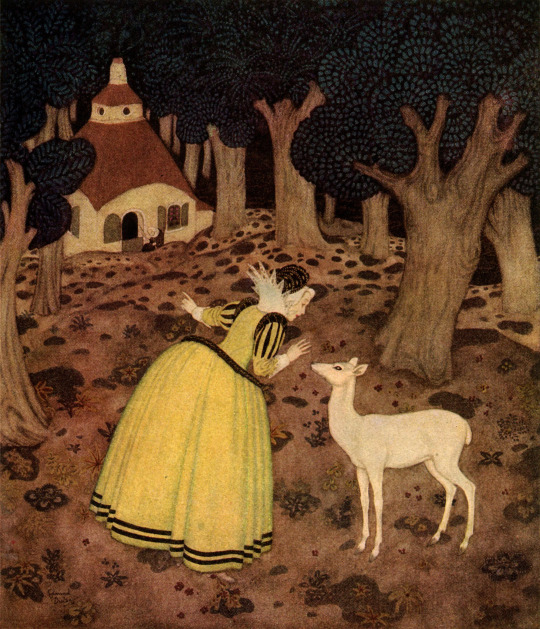
The Hind of The Wood: A French Fairy Tale
Dulac offers a faithful retelling of The Hind in the Wood (La Biche au bois, also translated as The White Doe or The Enchanted Hind), written by Marie-Catherine Le Jumel de Barneville, Countess d’Aulnoy. A talented and creative storyteller, Countess d’Aulnoy gave us the very words “fairy tale” in 1697, when she published her first collection under the title Les Contes des fees (Tales of the Fairies).
Though the titular hind is the star of the story, the scene opens with an unhappy, childless queen encountering a talking crayfish. Though “hearing a big Crayfish talk—and talk so nicely too—was a great surprise to her,” the queen listens carefully to the crustacean.
The reward for her attentiveness is a kingdom transformed. Beneath her feet appears “a carpet of violets, and, in the giant cedars above, thousands of little birds, each one a different colour, [singing] their songs; and the meaning of their melody was this: that cradle, woven by fairy fingers, was not there for nothing.” Soon she will be a mother!
A troupe of fairies gather around the suddenly expecting queen and ask that she welcome them on the day of birthing so they can give special gifts to the babe, who will be named Désirée. And on that special day, the queen indeed remembers to bid them come to the palace. Sadly, she neglects to invite the talking crayfish (who is really the Fairy of the Fountain) to the celebration.
Curses. But only small ones, in the scheme of things. The Fairy of the Fountain warns the royal parents to keep Princess Désirée from seeing daylight until she turns fifteen. That’s all.
Alas, the Warrior Prince lies on his death bed. Just a portrait of Désirée is enough to make him fall in love and abandon his plans to marry Black Princess. Yet he cannot see her—she will not be fifteen for a few more months. To save the Warrior Prince, Désirée agrees to travel with her two ladies-in-waiting by darkened carriage to his kingdom.
Unfortunately, one of those ladies-in-waiting, Long-Epine, is a traitor. She slits the cover of the carriage, exposing Désirée to daylight. Just a drop of sunlight turns the princess into a dazzling white hind. She instantly runs off into the forest. And that is the curse: by day, a doe; by night, a lonely princess.
The Warrior Prince wanders this very forest and soon spots the white deer. Annoyed that the animal tries to keeps its distance from him, he looses an arrow and pierces her flank. He’s sorry! Especially when he finds out the hind is his beloved, enchanted.
She isn’t enchanted for much longer, however. The Prince, even knowing all, loves her. And that is enough to break the spell
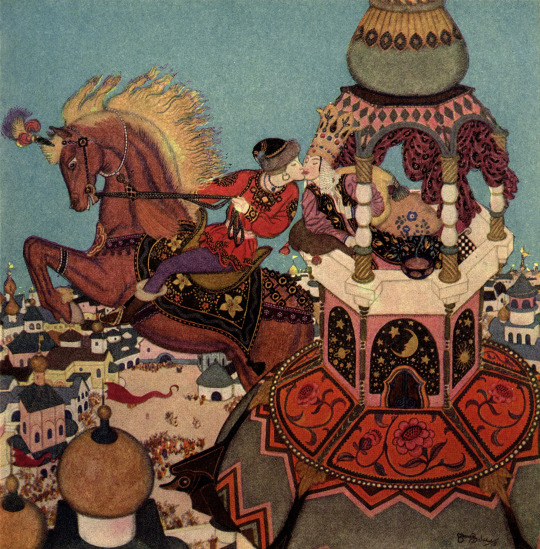
Ivan and the Chestnut Horse: A Russian Fairy Tale
Variations of Ivan and the Chestnut Horse are abundant in Russian folklore. Sometimes Ivan rides a chestnut horse, sometimes a dun. A common version of the story, known as Sivko-Burko, was collected by A. N. Afanas’ev in the mid-nineteenth century. Included in Jack V. Haney’s comprehensive The Complete Folktales of A. N. Afanas’ev (Tale #179, Vol. II), this version gives Ivan a magic black steed.
Ivan and his brothers have just committed themselves holding daily prayers over the grave of their recently departed father when they hear that Princess Helena the Fair has decided to wed. To win her favor, her suitor must leap on horseback to the top of the shrine on which she sits, kissing her as he flies through the air.
Ivan, the youngest of the siblings, offers to take on the burden of graveside prayer for a week so his brothers can curl their hair and train their horses for the challenge. One week stretches to two, and then to three. The brothers ignore their filial duties to dye their mustaches. So much attention is paid to their appearance that they even neglect to feed their horses.
And yet, when the day of the leaping contest arrives, the older brothers dash away on their mounts, leaving Ivan alone to pray and weep over his father’s grave.
It was thus that two out of three brothers miss their father’s resurrection. Shaking himself free of the damp earth, the father offers to help his youngest son. He begins to call out in a loud voice—one time, two times, three times. Ivan discovers his father is summoning a beautiful chestnut horse!
Yes, this is the enchanted steed that will take Ivan to the shrine of Helena the Fair, where—after two failed attempts—it rises to the leap, allowing Ivan to press his lips to those of the princess “in a long sweet kiss, for the chestnut horse seemed to linger in the air at the top of its leap while that kiss endured.”
After summoning the steed, Ivan’s father immediately vanishes. No matter, because Ivan is soon welcomed to supper with the father of his bride, Princess Helena the Fair.

The Blue Bird: A French Fairy Tale
The Blue Bird (l’Oiseau Bleu) is another tale that comes to us by Countess d’Aulnoy. Though there are many variants of the story found across Europe, scholar Jacques Barchilon notes that d’Aulnoy’s version is remarkably robust, appearing in a French Canadian collection, “word for word the version of Mme d’Aulnoy’s with all details,” as late as 1960. Andrew Lang also included it in The Green Fairy Tale Book.
Our story opens with a rich but miserable king. He’s inconsolable, having only recently become a widower. Hoping to comfort him, his courtiers present him with a woman dressed in mourning clothes and possibly crying even louder and longer than the king himself.
Finding solace in their similar sorrows, they decide to wed. Each brings into the marriage a daughter from their first marriage. The king’s daughter: “one of the eight wonders of the world,” the young and lovely Florine. The new queen’s daughter: “neither beautiful nor gracious,” the young Truitonne, with a face like a trout and hair “so full of grease that it was impossible to touch it.”
The queen loves Truitonne much more than she loves Florine, which wouldn’t matter if the king didn’t love the queen so much that he cedes to her every wish. For instance, he allows her to dress Truitonne in jewels and Florine in rags when Prince Charming appears at court. Despite the heavy-handed costuming, however, Prince Charming only has eyes—and love—for Florine.
The queen schemes. The queen plots. She enlists maid, frogs (“for mind you, frogs know all the routes of the universe”), and fairy godmothers. And yet the Prince will not be deflected from his plans to be with Florine. Finally, exasperated with his stubbornness, Truitonne’s fairy godmother turns the prince into a blue bird—for seven years!
It’s not too bad, at first. In bird form, the prince finds it easier to woo Florine—until the queen discovers that he flies to her window every night. Wielding her dark magic, Truitonne’s fairy godmother sends the blue bird to his nest to die.
Fortunately, every bad fairy seems to be balanced by a good fairy. This bright character finds the dying blue bird in his nest and heals him. It doesn’t seem to help much—the queen is determined that Truitonne will marry the prince even if only by trickery and deception.
The queen’s shenanigans never seem to end—this is a long fairy tale—but eventually the universe, or at the least the good fairy, finds a way to bring Prince Charming and Florine together.

The Friar and the Boy: An English Fairy Tale
The Friar and the Boy, also known as Jack and his Stepdame, reaches back to the poetry of medieval England. In volume three of Remains of the Early Popular Poetry of England (1866), William Carew Hazlitt records a c. 1585 London imprint of the chapbook verse that underpins the modern version of this tale.
The story begins with Jack, a young lad wronged by his stepmother. She starves him, she yells at him, she altogether doesn’t care for him.
One day, sent to the fields to watch the sheep, Jack encounters a hungry old man. Jack’s lunch isn’t much, as his stepmother is loathe to feed him decent food, but he gives it to the stranger. In return, the old man gives Jack three wishes.
Wish one: a bow and arrow, charmed such that the target will never be missed. Wish two: a pipe, its magic strong enough to make anyone dance who hears its tune. Wish three: an enchantment that will turn his stepmother’s harsh words into laughter.
Jack instantly puts his granted wishes to work. When his stepmother begins to scold him, her words turn to laughter. She laughs herself sick. When the Friar is sent to chastise Jack for his impudence, he ends up dancing through the brambles to Jack’s piping. Soon Jack has the entire village dancing to his tunes!
Alas, his poor old father begs for a rest. Jack loves his father, so he ceases to play. Not surprisingly, the Friar takes advantage of the pause to have Jack called before the Judge, “be-wigged and severe.”
The Friar makes his case: “the prisoner here has a pipe, and, when he plays upon it, all who hear must dance themselves to death, whether they like it or not.”
Intrigued, the Judge asks to hear this so-called Dance of Death. Jack is happy to oblige and takes up his pipe to play. Soon everyone in court is on their feet, dancing madly to the tunes. Even the judge joins in, “holding up his robes and footing it merrily.” He’s a believer, but he soon asks the boy to stop.
Jack agrees, but only if everyone promises to treat him properly.
“I think,” says the Judge, “if you will put your pipe away, they will consent to an amicable arrangement.”
Court is adjourned.
The End.
#edmund dulac#fairytale illustrations#fairytale art#french fairytales#british fairytales#english fairytales#edmund dulac's fairy book#world war I#wwI#fairytales and war#fairytale propaganda#russian fairytales#belgian fairytales#flemish fairytales#edmund dulac's fairy-book#italian fairytales#political fairytales
9 notes
·
View notes
Text
my pkm hc for ludger & casey:
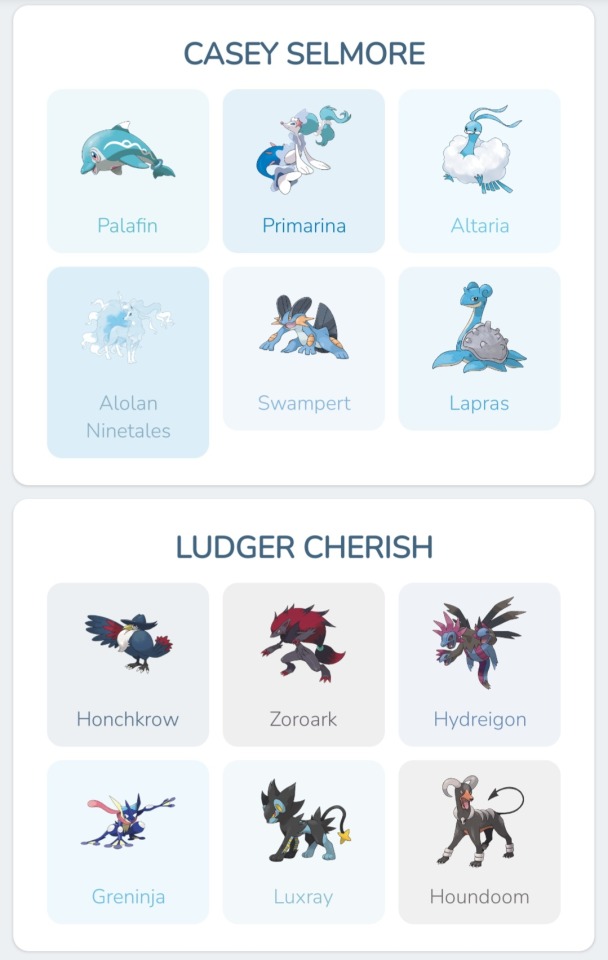
half of them are self-explanatory, and the other half are just the vibes lmfao
i heavily associate luxray with ludger because it's the only "fake" dark type pkm in his team, implying the truth about his self-proclaimed villainy. it holds a flame orb that occasionally inflicts a burn status and a portion of damage to itself in exchange for a massive boost of power when using Facade and especially with its Guts ability — which is just in line with how emotionally motivated he actually is under his mask and how much he willingly destroys himself in order to achieve his goals.
meanwhile, one of caseys primarinas moves is sparkling aria, which could eliminate the burn status of its targets on contact, signifying her wish to help ludger heal but the cost would be standing in his way of achieving his true desires as well as ruining ludger himself and whats left of their current relationship.
caseys water/fairy dual type primarina can easily wipe out most of ludgers dark type pkms due to type effectiveness but chose not to because... reasons.
ludgers luxray is an electric type pkm that can annihilate half of caseys team but also chose not to because... reasons.
#palafin = hero of justice#primarina = fame/celebrity#swampert = 물쟁이/물짱이 silly pun (mudkip) + can absolutely destroy luxray but then again chose not to#altaria = caseys softness / bubbly personality#lapras = her mastery of both water & ice elements / power awakening#ninetales & houndoom = a throwback to their fox & wolf joke#honchkrow = james moriarty#greninja = jack the ripper#zoroark = identity theft as a survival tactic#hydreigon = brutality / vengeance#luxray = villain wannabe / villain complex / self destruction / pride / territoriality / protectiveness towards its younglings#ludgers team has all type coverage#caseys team doesnt have any pkm that can effectively deal w fairy or water type#casey herself is the toughest challenge that she must overcome via inner change#aro ludgercasey propaganda#selmore's undercover husband
9 notes
·
View notes
Text
i could write about fairies but hoo boy thats a whole thing.
#also unreliable narrator marnie who likes the council and is kinda drinking the kool aid of their propaganda vs fairies who are overthrowing#because it's a corrupt government entity
2 notes
·
View notes
Text
mikey jumpscare
VOTE for tmnt omviverse in the @tmnt-crossover-polls !! it would be very kewl!

#tmnt crossover polls#tmntov propaganda#tmntov#tmntov mikey#tmnt omniverse#tmnt#tmnt au#tmnt iteration#tmntov art#👽 my art#fairy kei#yume kawaii
24 notes
·
View notes
Text
youtube
Adventure in Telezonia (Bell System, 1949) dir. Bil Baird, ft. the Bil Baird Marionettes
Not strictly a cartoon, but "cartoon adjacent" enough to post here. A 1949 educational/corporate propaganda film in which a boy with the voice of an adult woman loses his dog and doesn't know how to use the family telephone to call for help. (People literally didn't know these things. I mean, watch a modern millennial try to use an analog rotary phone.)
I saw this for the first time just last week, and it freaked me right the eff out! That red-headed guy with the giant hand?? Wow! And I find it appropriate how the super-judgmental telephone fairies live in a world of brutalist architecture. So dismal!










#educational film#marionettes#puppetry#Bil Baird#midcentury#brutalist architecture#fairies#corporate propaganda#bell telephone#AT&T#lost dog
2 notes
·
View notes